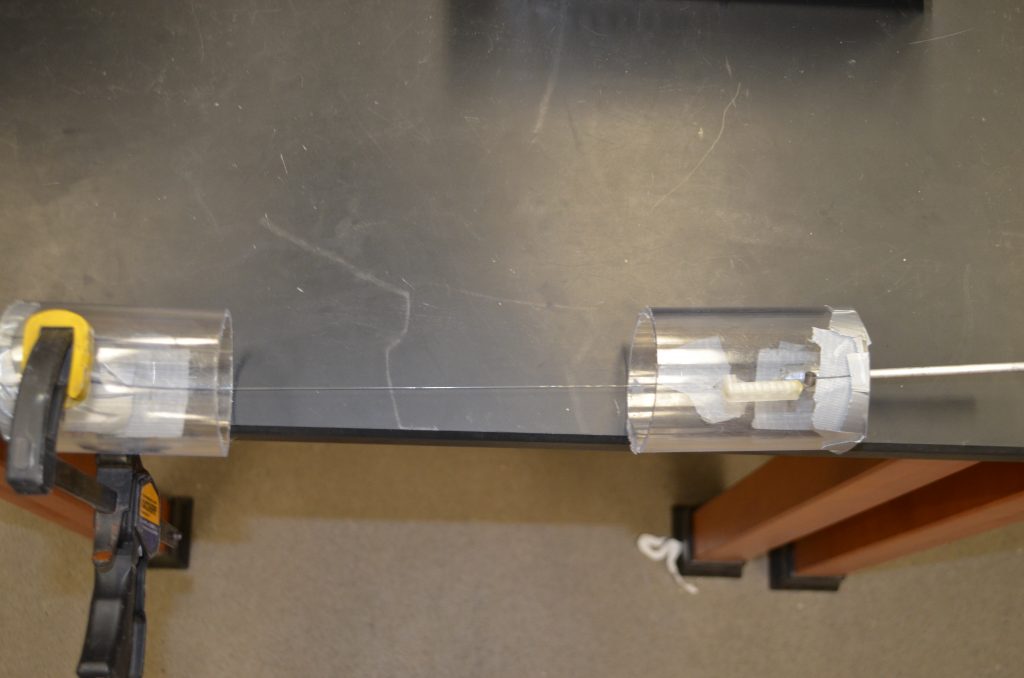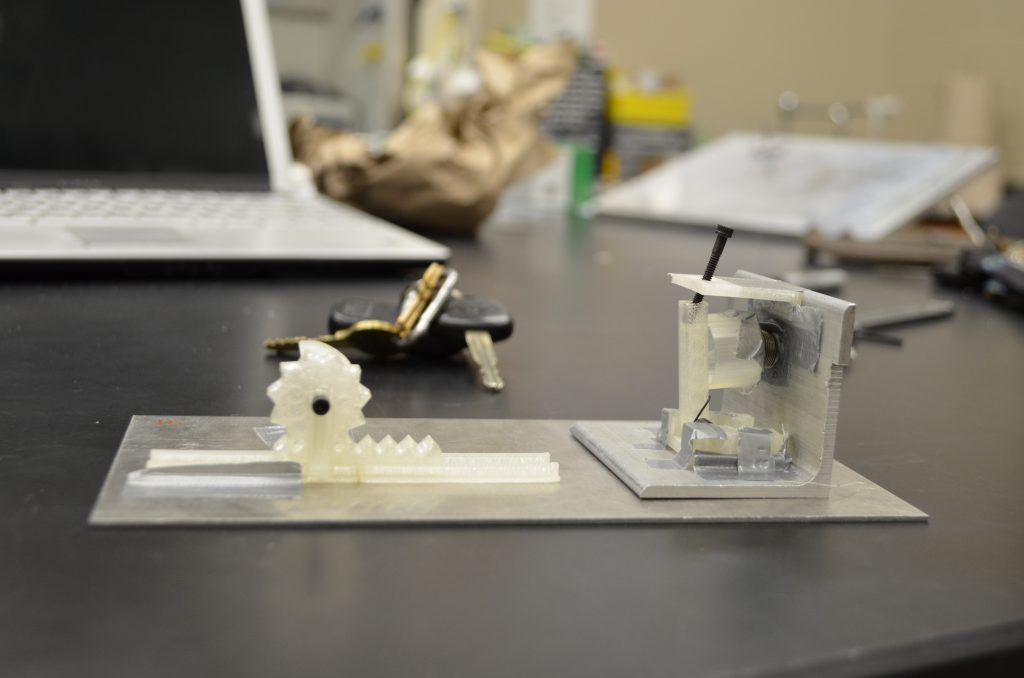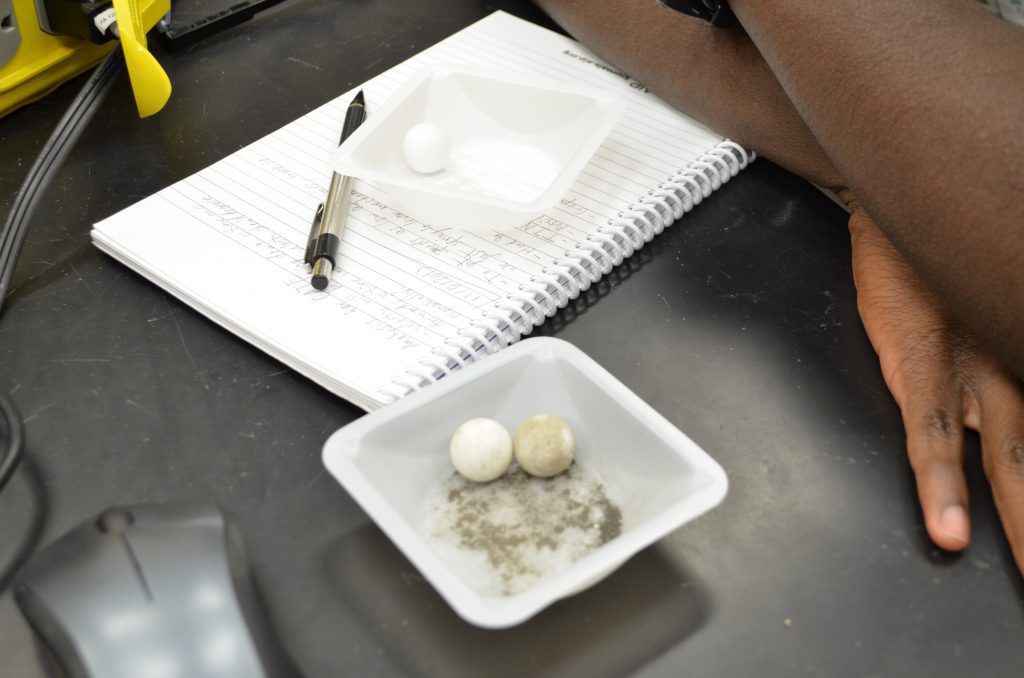On Tuesday, November 12, our team went into a discussion about the speed at which the ball would be launched. Dr. Colwell brought up the point that in order to get a slower speed the ball would have to be pushed instead of launched with a spring.
Kelly and Brad have been working on their prototypes and presented them to the team.*

This is Brad’s manual prototype. With it there is a turn crank that launches the ball and opens the catching mechanism and then when it is released it closes the door to the catcher.
This is Kelly’s mechanical prototype. Using an electrical current and muscle wire, Kelly has planned for the ball to be launched after a bar is released by the contraction of the muscle wire. The gear and pinon she has used will be paid with a spring to catch the ball.
Allyson has been looking into the type of tube and the flanges that will attach the tube to the box holding the experiments.
Sam has been researching different lenses to try and reduce the fisheye distortion. With the GoPro that we originally decided to use, it was discovered that there aren’t any reliable sources to change out the lens. In the November 19 meeting, the majority of the discussion revolved around the camera and their fish eye distortion. He found a new camera made by Polaroid that doesn’t have a fisheye distortion and has up to 60 frames per second.
“We need to know how far away the camera needs to be, the field of view it has, and how it will be stationed to the apparatus,” Addie said. As we research and decide on a camera, there are all things that we have to keep in mind.
Finally, Chris has been researching the ball that will be launched. He tested the balls in JSC and found a big difference in the amount that stuck to the ball when it was coated in silica beads.
*Keep an eye out for our upcoming article comparing and contrasting the two prototypes and the cameras that Sam is researching.


